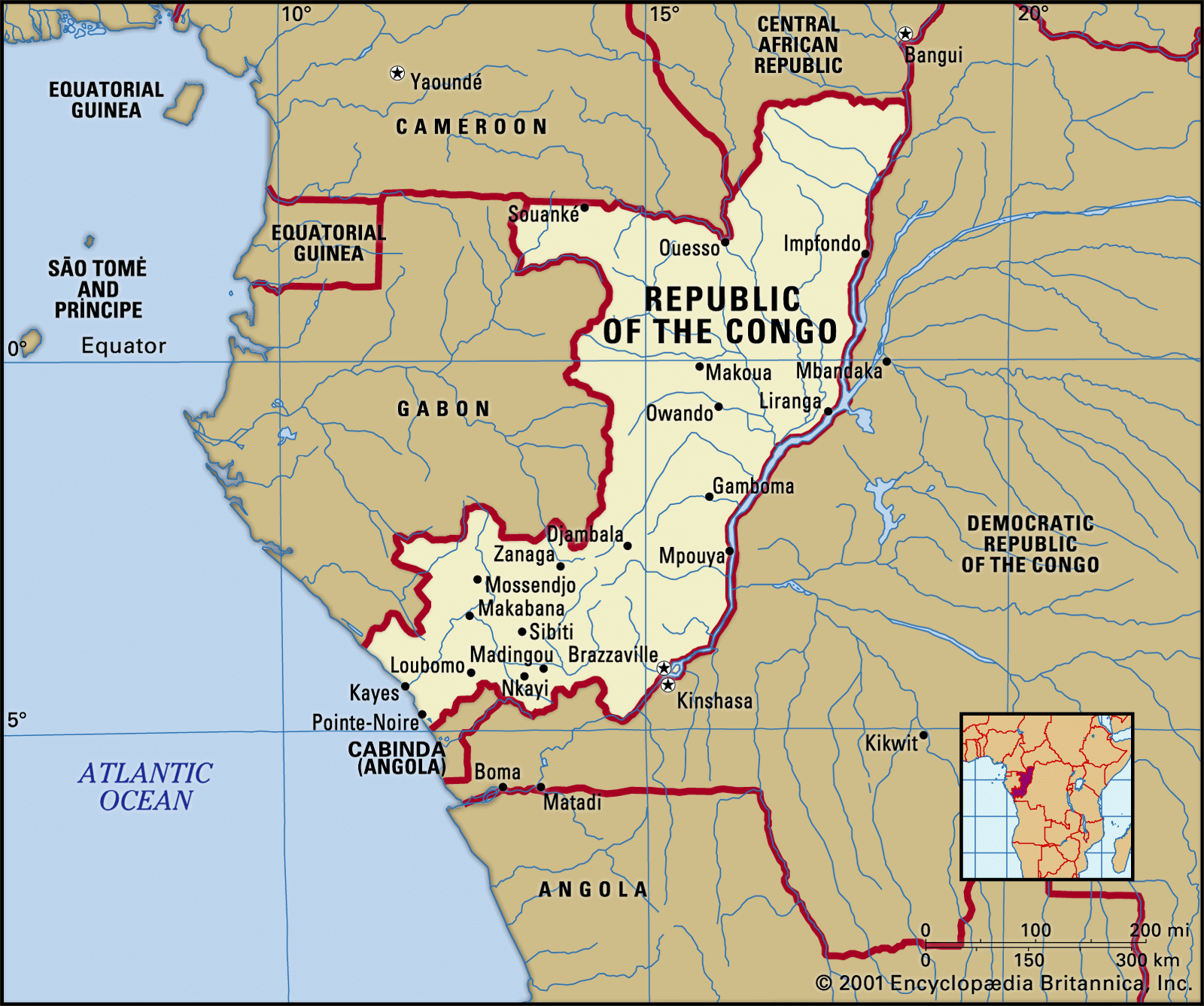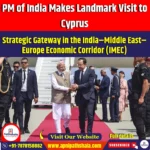GS Paper II: Impact of Policies and Politics of Countries on India’s Interests |
Why in News?
Due to the escalating violence in Congo, the United Nations Human Rights Council (UNHRC) has called for an emergency session. During this session, the Congolese government has called for holding Rwanda and the M23 rebel group accountable for crimes against humanity and has requested the establishment of a fact-finding mission to investigate the human rights violations.
Historical Context of Congo violence
- Colonial Era: In 1885, King Leopold II of Belgium colonized the Congo region. During this time, nearly two million people died, which was about half of the population at that time. The Congolese endured harsh conditions, their labor was exploited, and they were subjected to immense cruelty.
- The Beginning of Independence: In the 1950s, the independence movement gained momentum in Congo. By 1960, Congo gained independence from Belgium and elected Patrice Lumumba as its first Prime Minister. However, Congo’s vast natural resources attracted external powers. Lumumba’s opposition to Western intervention in mining led to his downfall, and he was assassinated in 1961. This marked the beginning of an uncertain era in the country. Eventually, Mobutu Sese Seko came to power. He amassed wealth by pleasing foreign powers, but after the Cold War ended in the 1990s, Congo’s situation worsened.
- Civil War and Rebellion: In the 1990s, the Rwandan genocide had a significant impact on Congo. The ethnic conflict between the Tutsi and Hutu groups spilled over into Congo, worsening the situation. This led to the First Congo War (1996-1997), which resulted in the fall of Mobutu. Laurent Kabila took power, but he too betrayed his supporters, which escalated into the Second Congo War (1998-2003), dubbed “Africa’s World War.” Over 5 million people lost their lives during this conflict. After Kabila’s assassination in 2001, his son, Joseph Kabila, assumed power. While the violence subsided, instability persisted, particularly in the eastern region due to rebel groups and mineral resources.
- Joseph Kabila’s second term ended in 2016. Delayed elections and growing protests worsened the situation. Congo continues to grapple with violence and political instability, and prospects for lasting peace and stability remain distant.
Democratic Republic of Congo (DRC):
|
Root Causes of Conflict and Rebellion in Congo
- Cultural and Ethnic Divisions: The ongoing conflict in Congo is closely tied to its complex ethnic structure, which traces back to the colonial era. When European colonizers drew the borders of Congo, they grouped together various ethnic groups that had historically been rivals. This division, under the “divide and rule” policy, intensified tensions and led to ethnic conflicts. These cultural and ethnic divides continue to fuel violence and wars in the country today.
- Exploitation of Natural Resources: Congo is rich in natural resources like coltan, gold, diamonds, and cobalt. The control over these resources has been a major source of conflict among local and regional groups. Armed groups fight to dominate the mineral-rich areas to accumulate wealth and consolidate power, further deepening instability in the country.
- Weak Governance: Governance in Congo has been extremely weak, particularly since Mobutu Sese Seko’s rule starting in 1965, which was marked by corruption and abuse of power. Although Mobutu’s regime ended in 1997, the state’s authority was undermined by the activities of armed groups, and the government’s failure to provide essential services or security led more people to join armed conflicts, perpetuating instability.
- Foreign Intervention: Foreign nations, particularly Rwanda and Uganda, have played a significant role in the conflicts within Congo. After the 1994 Rwandan genocide, both countries intervened militarily in the eastern part of Congo, aiming to influence regional security and politics. Their involvement fueled further conflict and contributed to the start of two major wars.
- Lack of Accountability for Atrocities: Congo has faced widespread human rights violations and war crimes, yet there has been no accountability for the perpetrators. The failure to prosecute those responsible for these crimes has led to deep disillusionment among the Congolese people, who feel that justice is unattainable.
Consequences of the Congo Conflict and Rebellion
- Human Rights Crisis and Impact on Citizens: The ongoing conflict in Congo has led to a severe human rights crisis. The lives of its citizens have become increasingly unsafe, forcing them to fight daily for their survival and security. Thousands of innocent civilians have been killed, subjected to physical violence, and experienced other inhumane acts in the midst of the conflict.
- Displacement of Citizens and Refugee Crisis: The escalating conflict in Congo has displaced millions of people from their homes. By 2024, around 7.3 million people were internally displaced, making it one of the world’s largest displacement crises. In the regions most affected by the fighting, people are forced to live without food, shelter, or medical services. Problems like cold, floods, and pandemics have further exacerbated the situation, adversely affecting the citizens’ livelihoods and health.
- War Crimes and Gender-Based Violence: Women and children have been particularly vulnerable to war crimes and gender-based violence in Congo. The United Nations and other organizations have documented widespread incidents of violence.
- Human Rights Violations, Torture, and Arbitrary Arrests: The ongoing conflict has led to an increase in torture and abductions of Congolese citizens. A 2022 report by the United Nations found that both state forces and armed groups were responsible for the torture of many innocent civilians. Additionally, numerous people have been imprisoned without cause or disappeared altogether.
- Health, Education, and Poverty: The conflict in Congo not only affects citizens’ safety but also exacerbates health and education crises. Despite its natural resource wealth, Congo remains one of the poorest countries in the world. As of 2023, an estimated 74.6% of the population lived on less than $2.15 a day. Poverty, lack of education, and inadequate healthcare services have pushed the citizens into even greater hardship.
The Role of the United Nations in Mitigating the Congo Conflict
- The United Nations (UN) began its first major peace mission in Congo in 1960, known as the “United Nations Operation in the Congo” (ONUC), following the crisis that emerged after the country gained independence. This was the UN’s first peacekeeping mission that involved military force, and it became one of the largest peacekeeping operations in terms of scale and scope.
- The primary objectives of the mission were to establish peace in Congo, prevent foreign intervention, stabilize the economy, and restore order. UN troops were deployed within the first two weeks, and the force was expanded as the situation remained unstable.
- In late 1961, the UN initiated Operation Morthor, a military campaign aimed at dismantling the secessionist government in the Katanga province of southern Congo. This operation was launched without international approval but played a crucial role in bringing peace to Congo. After the operation, the UN withdrew its troops, but despite multiple peacekeeping efforts, the political and military situation in Congo has yet to stabilize.
UPSC Previous Year Questions (PYQs) Question (2023): Which country produces nearly three-fourths of the world’s cobalt, a metal essential for the production of electric vehicle batteries? Question (2023): Which of the following is part of the Congo Basin? |
Explore our Books: https://apnipathshala.com/product-category/books/
Explore Our test Series: https://tests.apnipathshala.com/








